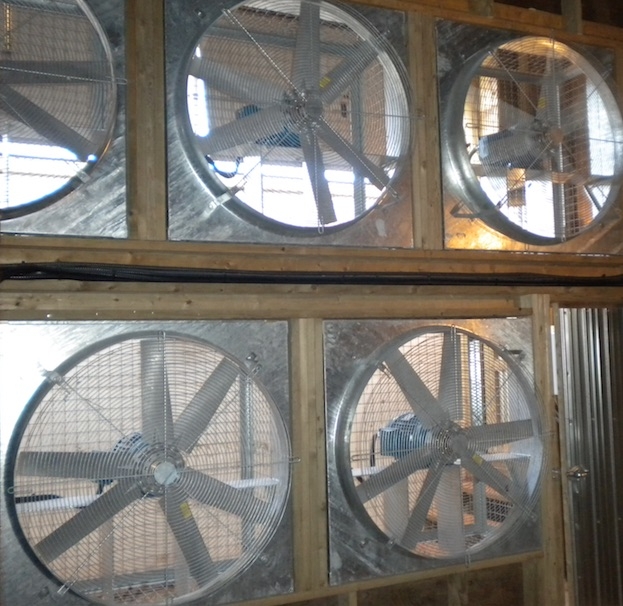
Features
Agronomy
Storage
How to optimize ventilation
After a final holding temperature is achieved in storage, it is important to ventilate properly in order to manage the byproducts of respiration, ensure a uniform temperature and an ideal environment for the duration of the storage period, which will maximize the value of the crop.
January 16, 2018 By Duane Gorman
 Achieving the ideal storage environment to maximize crop value
Achieving the ideal storage environment to maximize crop valuePotatoes in storage are living. It is the job of the storage manager to ensure the crop sustains that life. The respiration pathway is as follows: Glucose plus oxygen yields water, carbon dioxide, and heat. Glucose is oxidized in the mitochondria into nutrients required by the tuber to survive. The byproducts are: water, which is retained in the cells; carbon dioxide, which is emitted through the lenticels of the tuber’s skin; and heat, which is mainly emitted by conduction. Fresh air must be introduced so that the carbon dioxide and heat are rejected through the systems exhaust mechanism. Once that is achieved, ventilation is only required periodically to help ensure a uniform temperature.
Condition and end use of the crop, as well as the airflow capacity of the ventilation system are all factors that will lend to a ventilation schedule. Ventilation should be kept to a minimum as overventilation or recreational ventilation will cause unnecessary weight loss and increased power consumption.
In order to determine the correct amount of ventilation it is best to observe the supply and return temperatures and maintain a differential of approximately 1.5 C from the bottom and top of the pile, the supply and return air temperatures respectively.
In some cases, the storage manager may have to manually observe and operate the system to achieve the optimal ventilation schedule. However, the control system should be equipped with features to perform this task automatically.
Processing and seed varieties sometimes require a closer differential. Storage managers should consult with local potato specialists for recommendations for a given variety. The amount of ventilation will be dependent on the final holding temperature, the variety, and tuber condition. The respiration rate is greater at warmer temperatures, while immature, damaged or diseased potatoes will also have a higher respiration rate.
In addition to temperature, the second byproduct, carbon dioxide, must also be managed. Carbon dioxide is known to have a darkening effect on processed end products, such as chips and fries. While the relationship between carbon dioxide and darkening has been the subject of research papers since 1959, the science does not appear to have fully explained the relationship.
It is generally accepted that prolonged exposure over 2,500 parts per million will negatively affect the colour of the end product. The removal of carbon dioxide often requires a sacrifice in the supply temperature to maximize fresh air intake and the rejection of carbon dioxide. Carbon dioxide purging should be limited to short time intervals, as to not subject the tubers to colder or warmer temperatures for prolonged periods.
Despite the temptation to overventilate, as a result of fear of condensation or hot spots, storage managers must take care to ventilate only as required. Needless overventilation can have a negative effect on both sides of the ledger – marketable yield is lost through shrink and pressure bruise, while utility bills needlessly increase. Through careful attention to the stored crop and the control system, an optimal rate of ventilation will be achieved, therefore minimizing cost and maximizing revenue.
Print this page